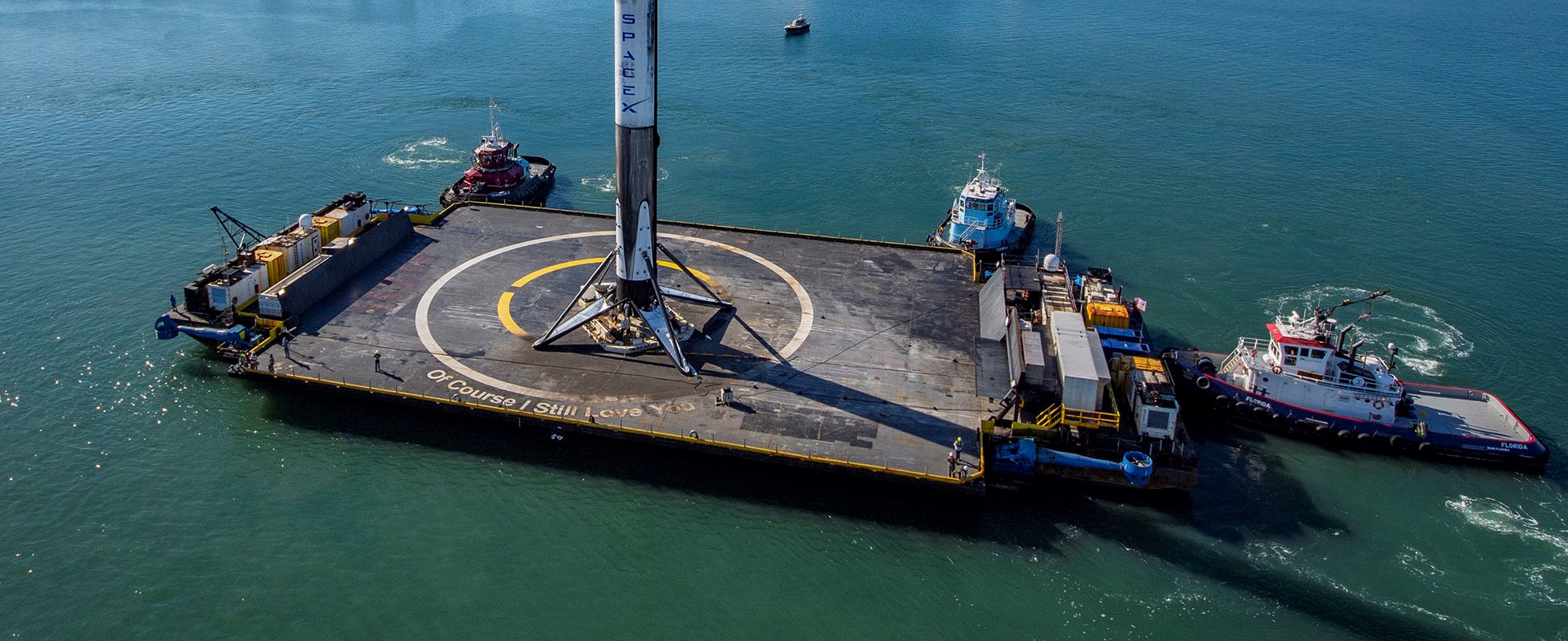
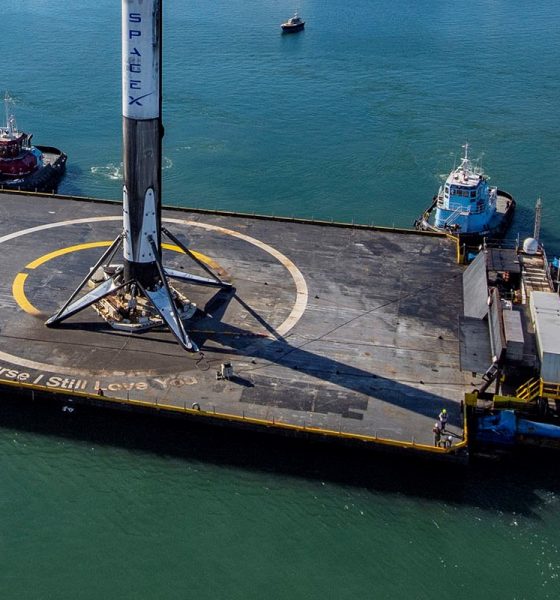
News
SpaceX adds a second drone ship to its East Coast rocket recovery fleet
On December 10th, SpaceX’s East Coast rocket recovery fleet added a second drone ship to its ranks in a bid to expand its capabilities to support dozens of annual Falcon 9 and Heavy launches, as well as experimental Starship and Super Heavy booster recoveries.
Formerly stationed out of Port of Los Angeles to support SpaceX’s once-substantial West Coast launch manifest, the need for West Coast launches has rapidly dried up over the last six months. That drought had such a long lead that SpaceX decided to transfer drone ship Just Read The Instructions (JRTI) through the Panama Canal, moving the vessel several thousand miles from Port of Los Angeles to Port Canaveral, Florida.
JRTI made it through the Canal several months ago and headed East towards Florida before making an intriguing and lengthy pit stop in a Louisiana port. While there, marine engineers and technicians performed a number of unknown tasks presumed to be a scheduled period of inspections and maintenance. In the last few weeks JRTI spent in Louisiana, SpaceX loaded the drone ship with more than a dozen huge generators and power controllers, as well as six massive maneuvering thrusters.
Although perspectives were lacking while JRTI was docked in LA, it was clear that some (or all) of the new hardware was meant for the drone ship, indicating that the rocket recovery platform could be in for some major upgrades. The aforementioned thrusters are much larger and appear to be heavier than JRTI’s former blue azimuth thrusters, four of which also adorn Florida-based drone ship Of Course I Still Love You (OCISLY).
Those massive thrusters are presumably meant for JRTI (and possibly OCISLY). The fact that they have been delivered alongside an even larger number of generators – far more than are usually present on SpaceX drone ships – indicates that their power output is probably larger, too. It’s not clear how much more powerful they are but one goal is unequivocal: with more powerful thrusters, SpaceX’s drone ships should be much more tolerant of bad weather, meaning that SpaceX will be able to launch Falcon 9, Falcon Heavy, and Starship without having to worry as much about the weather hundreds of miles downrange.
Depending on how powerful they are, it’s also possible that those upgraded thrusters are strong enough to independently power drone ships to and from their ocean landing zones. As of now, SpaceX must contract days of tugboat services to tow drone ships to and from their landing zones, by far one of the biggest recurring costs for booster recoveries. If a major power supply upgrade and much larger thrusters are indeed enough to enable independent cruise capabilities, it could significantly streamline SpaceX’s drone ship recovery efforts, cutting costs and increasing flexibility and availability.
It’s hard to say why drone ship JRTI only brought six new thrusters with it, given that SpaceX’s East Coast fleet now has two drone ships and four thrusters are needed to enable stationkeeping on just one of them. Perhaps two more thrusters are on backorder and will be delivered directly to Port Canaveral. More likely, only one drone ship – likely JRTI – will initially be upgraded with new thrusters and power equipment, leaving two spare thrusters in case those installed are damaged by recovery attempts or fail for more mundane reasons.
In the past, drone ship OCISLY has suffered a handful of recovery anomalies that forced SpaceX to replace the vessel’s blue azimuth thrusters and their associated hydraulic equipment. In some cases, a lack of replacement thrusters lead SpaceX to scavenge drone ship JRTI, leaving the ship without thrusters for several months. With these latest upgrades, SpaceX has presumably learned from those past mistakes and ensured that several spare generators and thrusters are on hand.
Given that SpaceX has yet to install those upgraded thrusters or generators on either JRTI or OCISLY, as well as the general uncertainty surrounding their purpose, it’s safe to say that the next several weeks will be exciting. For now, it’s unknown when JRTI will be ready to support its first East Coast rocket recovery, but there will be plenty of launches to choose from once she is.
With two drone ships now stationed out of Port Canaveral, SpaceX will be able to support a more capable Falcon Heavy configuration, expending the center core while recovering both side boosters at sea. SpaceX will also be able to attempt experimental Starship and Super Heavy drone ship landings while still having a spare ship to support its regular Falcon 9 missions. Most importantly, two drone ships will allow SpaceX to reach launch/landing cadences and turnaround times previously impossible with a single ship, an absolute necessity if the company hopes to achieve its goal of ~24 Starlink launches on top of 10+ commercial launches in 2020.
Check out Teslarati’s Marketplace! We offer Tesla accessories, including for the Tesla Cybertruck and Tesla Model 3.

News
Tesla earns top honors at MotorTrend’s SDV Innovator Awards
MotorTrend’s SDV Awards were presented during CES 2026 in Las Vegas.

Tesla emerged as one of the most recognized automakers at MotorTrend’s 2026 Software-Defined Vehicle (SDV) Innovator Awards.
As could be seen in a press release from the publication, two key Tesla employees were honored for their work on AI, autonomy, and vehicle software. MotorTrend’s SDV Awards were presented during CES 2026 in Las Vegas.
Tesla leaders and engineers recognized
The fourth annual SDV Innovator Awards celebrate pioneers and experts who are pushing the automotive industry deeper into software-driven development. Among the most notable honorees for this year was Ashok Elluswamy, Tesla’s Vice President of AI Software, who received a Pioneer Award for his role in advancing artificial intelligence and autonomy across the company’s vehicle lineup.
Tesla also secured recognition in the Expert category, with Lawson Fulton, a staff Autopilot machine learning engineer, honored for his contributions to Tesla’s driver-assistance and autonomous systems.
Tesla’s software-first strategy
While automakers like General Motors, Ford, and Rivian also received recognition, Tesla’s multiple awards stood out given the company’s outsized role in popularizing software-defined vehicles over the past decade. From frequent OTA updates to its data-driven approach to autonomy, Tesla has consistently treated vehicles as evolving software platforms rather than static products.
This has made Tesla’s vehicles very unique in their respective sectors, as they are arguably the only cars that objectively get better over time. This is especially true for vehicles that are loaded with the company’s Full Self-Driving system, which are getting progressively more intelligent and autonomous over time. The majority of Tesla’s updates to its vehicles are free as well, which is very much appreciated by customers worldwide.
Elon Musk
Judge clears path for Elon Musk’s OpenAI lawsuit to go before a jury
The decision maintains Musk’s claims that OpenAI’s shift toward a for-profit structure violated early assurances made to him as a co-founder.

A U.S. judge has ruled that Elon Musk’s lawsuit accusing OpenAI of abandoning its founding nonprofit mission can proceed to a jury trial.
The decision maintains Musk’s claims that OpenAI’s shift toward a for-profit structure violated early assurances made to him as a co-founder. These claims are directly opposed by OpenAI.
Judge says disputed facts warrant a trial
At a hearing in Oakland, U.S. District Judge Yvonne Gonzalez Rogers stated that there was “plenty of evidence” suggesting that OpenAI leaders had promised that the organization’s original nonprofit structure would be maintained. She ruled that those disputed facts should be evaluated by a jury at a trial in March rather than decided by the court at this stage, as noted in a Reuters report.
Musk helped co-found OpenAI in 2015 but left the organization in 2018. In his lawsuit, he argued that he contributed roughly $38 million, or about 60% of OpenAI’s early funding, based on assurances that the company would remain a nonprofit dedicated to the public benefit. He is seeking unspecified monetary damages tied to what he describes as “ill-gotten gains.”
OpenAI, however, has repeatedly rejected Musk’s allegations. The company has stated that Musk’s claims were baseless and part of a pattern of harassment.
Rivalries and Microsoft ties
The case unfolds against the backdrop of intensifying competition in generative artificial intelligence. Musk now runs xAI, whose Grok chatbot competes directly with OpenAI’s flagship ChatGPT. OpenAI has argued that Musk is a frustrated commercial rival who is simply attempting to slow down a market leader.
The lawsuit also names Microsoft as a defendant, citing its multibillion-dollar partnerships with OpenAI. Microsoft has urged the court to dismiss the claims against it, arguing there is no evidence it aided or abetted any alleged misconduct. Lawyers for OpenAI have also pushed for the case to be thrown out, claiming that Musk failed to show sufficient factual basis for claims such as fraud and breach of contract.
Judge Gonzalez Rogers, however, declined to end the case at this stage, noting that a jury would also need to consider whether Musk filed the lawsuit within the applicable statute of limitations. Still, the dispute between Elon Musk and OpenAI is now headed for a high-profile jury trial in the coming months.
News
Tesla Giga Shanghai celebrates 5 million electric drive unit milestone
The milestone was celebrated by the company in a post on its official Weibo account.
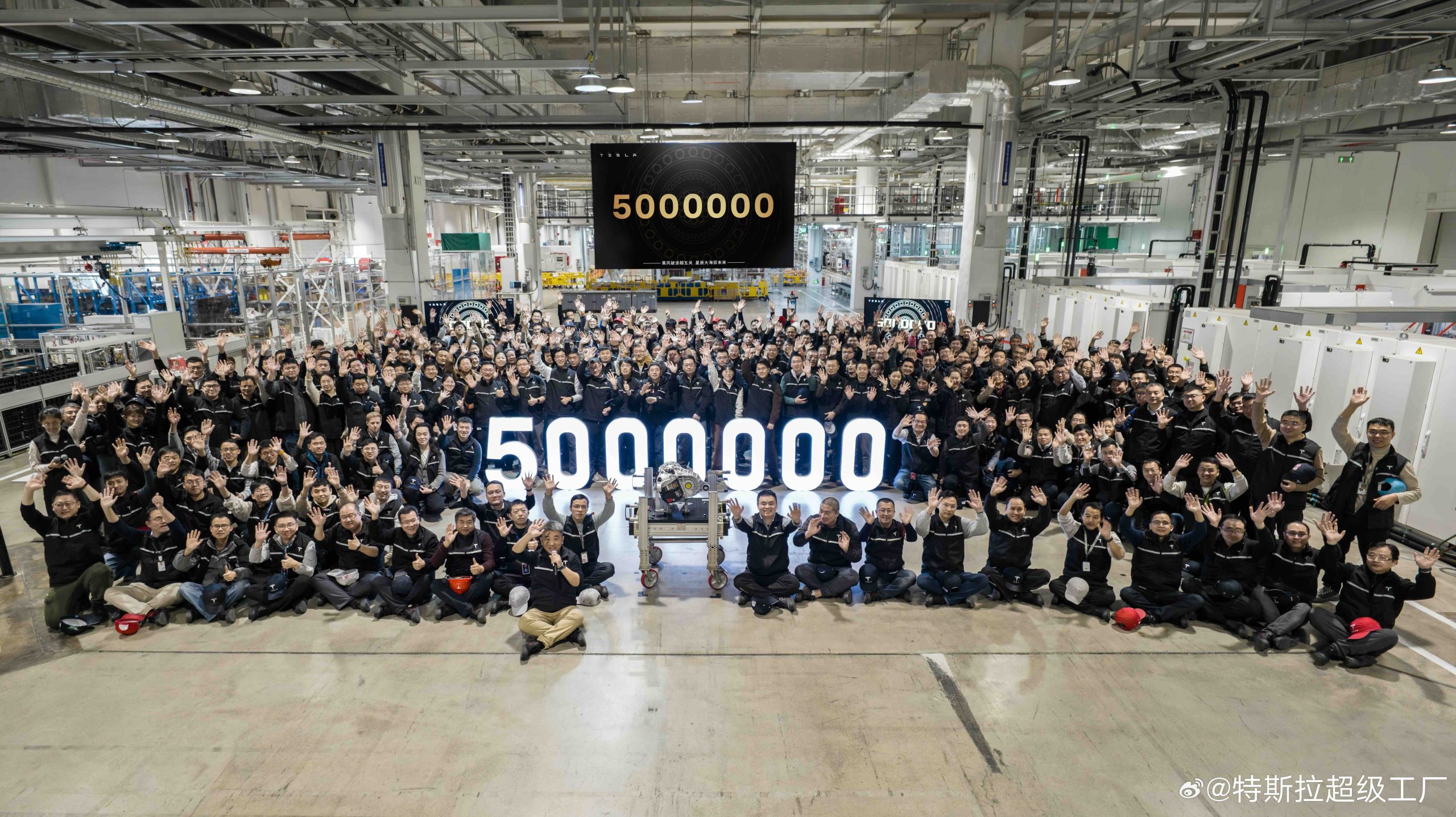
Tesla China has reached another manufacturing milestone at Gigafactory Shanghai, rolling out the facility’s 5 millionth locally produced drive unit.
The milestone was celebrated by the company in a post on its official Weibo account. In its post, the Giga Shanghai team could be seen posing with the 5 millionth drive unit.
Giga Shanghai’s major benchmark
The milestone drive unit was produced at Gigafactory Shanghai, which produces the Model Y and the Model 3. In a release, Tesla China noted that its three-in-one integrated electric drive system combines the motor, gearbox, and inverter into a single compact assembly. This forms a powerful “heart” for the company’s electric cars.
Tesla China also noted that its drive units’ integrated design improves energy conversion efficiency while reducing overall weight and complexity, benefits that translate into stronger performance, improved handling, and longer service life for its vehicles.
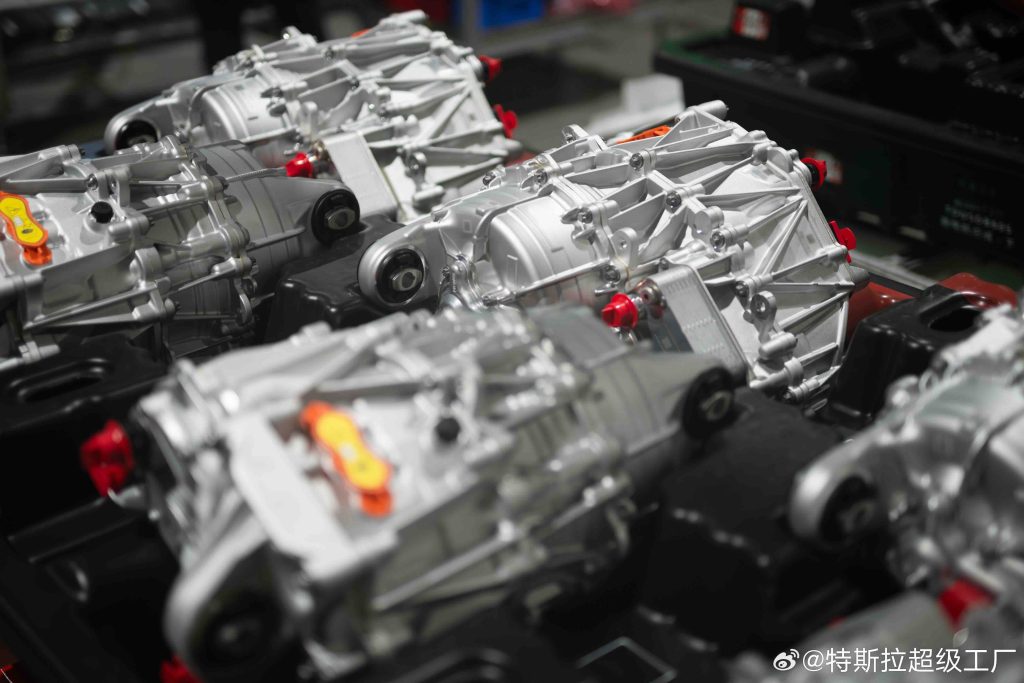
The new milestone builds on earlier achievements at the same site. In July 2024, Tesla announced that its 10 millionth electric drive system globally had rolled off the line at the Shanghai plant, making it the first self-produced Tesla component to reach that volume.
More recently, the factory also produced its 4 millionth China-made vehicle, a Model Y L. The factory has also continued hitting global production milestones, rolling out Tesla’s 9 millionth EV worldwide late last year, with the landmark vehicle being a Tesla Model Y.
Tesla China’s role
Construction of Giga Shanghai began in January 2019, with production starting by the end of that year. This made it the first wholly foreign-owned automotive manufacturing project in China. The facility began delivering Model 3 vehicles locally in early 2020 and added Model Y production in 2021. The plant is now capable of producing about 1 million vehicles annually.
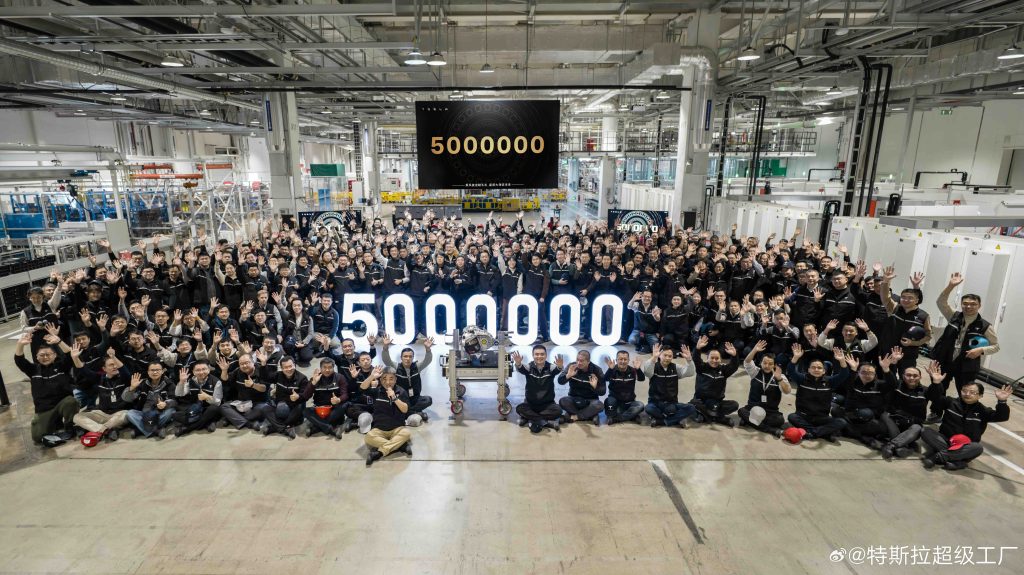
Throughout 2025, Giga Shanghai delivered 851,732 vehicles, representing a 7.08% year-on-year decline, according to data compiled by CNEVPost. Even so, recent months showed renewed momentum.
In December alone, Tesla China recorded wholesale sales of 97,171 vehicles, including domestic deliveries and exports, making it the company’s second-best monthly total on record, per data from the China Passenger Car Association. Retail sales during December reached roughly 94,000 units, up about 13% year over year.








